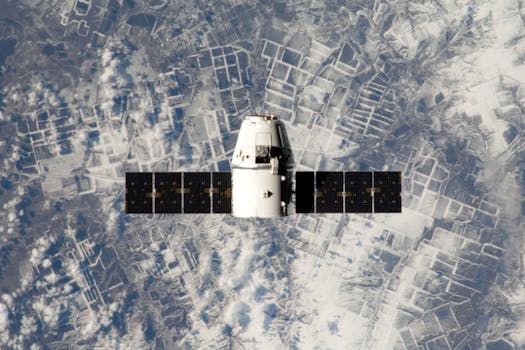The Cosmic Web: How Satellites Enhance Communication and Environmental Monitoring

The Cosmic Web: How Satellites Enhance Communication and Environmental Monitoring
The Cosmic Web, The Cosmic Web refers to the network of satellite systems that crisscross our planet, providing critical infrastructure for communication, navigation, and environmental monitoring. This complex network of satellites has revolutionized the way we communicate, navigate, and understand our planet. In this article, we will delve into the world of satellites and explore how they enhance communication and environmental monitoring.
Introduction to Satellite Technology
Satellite technology has come a long way since the launch of the first artificial satellite, Sputnik, in 1957. Today, there are thousands of satellites orbiting the Earth, providing a wide range of services, including communication, navigation, weather forecasting, and Earth observation. Satellites are essentially sophisticated computers that are launched into space to perform specific tasks. They are equipped with sensors, transponders, and antennas that enable them to collect and transmit data back to Earth.
Satellites play a critical role in enhancing communication, particularly in remote and underserved areas where traditional communication infrastructure is lacking. Satellite communications provide a means of connecting people, businesses, and organizations, regardless of their geographical location. They enable voice, video, and data communication, facilitating global communication and commerce.
Environmental Monitoring
Satellites also play a vital role in environmental monitoring, providing critical data on the health of our planet. Earth observation satellites are equipped with sensors that can detect changes in the environment, such as deforestation, ocean pollution, and climate change. These satellites can monitor the Earth’s surface, atmosphere, and oceans, providing valuable insights into the impact of human activities on the environment.
For example, satellite data can be used to track changes in sea level, glacier melting, and ice sheet coverage. This data can help scientists understand the impacts of climate change and develop strategies to mitigate its effects. Satellites can also monitor ocean health, tracking changes in ocean currents, temperature, and chemistry. This data can help us understand the impacts of pollution, overfishing, and other human activities on marine ecosystems.
Case Studies and Applications
There are many examples of how satellites are being used to enhance communication and environmental monitoring. For instance, the European Space Agency’s (ESA) Copernicus program is a network of satellites that provide high-resolution images of the Earth’s surface. These images can be used to monitor land use, track changes in the environment, and respond to natural disasters.
In addition, satellite communications are being used to connect remote communities, providing access to education, healthcare, and other essential services. For example, the ITU (International Telecommunication Union) has launched several initiatives to use satellite communications to bridge the digital divide and promote sustainable development.
Conclusion
In conclusion, the Cosmic Web of satellite systems plays a critical role in enhancing communication and environmental monitoring. Satellites have revolutionized the way we communicate, navigate, and understand our planet. As technology continues to evolve, we can expect to see even more innovative applications of satellite technology, from smart cities to environmental sustainability. The future of satellite technology is bright, and it will undoubtedly continue to shape the way we live, work, and interact with our planet.